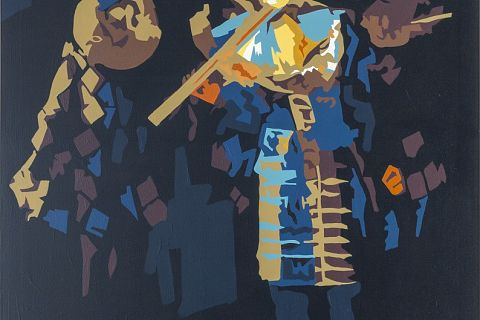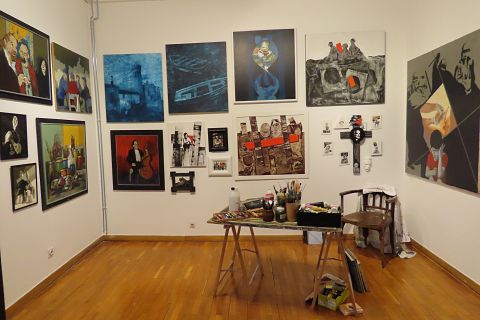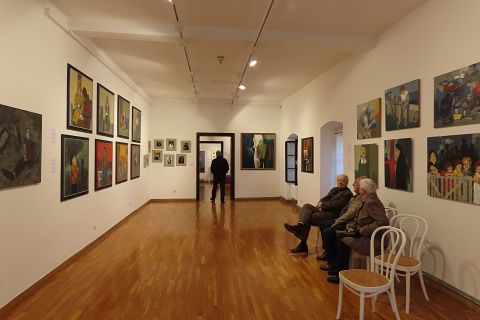Dušan Sterle: Under the scrutiny of the time
Dušan Sterle (1948, Razdrto pri Postojni) is a painter, illustrator, graphic artist and designer. He studied at the School for Design in Ljubljana, where he was taught by art pedagogue, professor, Tone Žnidaršič and academic painter Marko Šušteršič. As a graphic designer, he was employed in the newspaper Delo until his retirement. He presented his work at more than thirty independent solo exhibitions, and since 1970, when he began his creative career, he has been constantly present on numerous art colonies. He was awarded several times for his work.
At the beginning, in the 1970s, Sterle’s painting was drawn from the pool of surrealist painting. As a traditional artist, he turned to rendering unintentional labels in this period, which they travel in their depths through the mental networks in which we catch ourselves, and they show the images that the artist obsesses. Of course, in spite of realism, this is not a photographic copy of the real, visible, but for the constant application of an individual outside the context, of joining it and the creation of one’s own interpretation. If the initial works collided with the door of illusionist surrealism, as dealt with by Salvador Dali and Rene Magritte, both in terms of content, as well as in the selection of fine arts and techniques of refined artwork, the artistic expression of completely own artistic expression, which Sterle develops to the extent that with all recognition we can say that it is his style; from that moment on, everything that creates is bearing a recognizable seal.
In the figure of Dušan Sterle, it is mainly for images that are created in broader cycles. It’s about personal experiences, memories, hip moments, sometimes cut outs from dreams, games. The work is often dominated by some kind of lightness, which is also characteristic of postmodernist figurative painting, and it is not necessary to ignore the use of all artistic traditions until that time, which, due to the openness of artists and the knowledge of the past artistic genres, developed completely unified stylistic diversity and the multifacetedness. Because of this, the author can avoid known messages, introduce hidden meanings, and is here because of art, works alone, and does not stand in the place of the one who would try to improve the world through work. Images of everyday life do not carry messages, they can be realistic and imaginary, they do not reflect only our lives, and they mostly climb to a place that exceeds the value of a document, so it is not a photographic copy, but an interpretation of a single moment. Sterle introduces the contents of everyday life in a way that tiny moments, which we also encounter, are caught in us, are part of them or merely their observers.
Sterle’s artistic path is a kind of business card, a chronicle of society and an individual, a gift of nature, and a strictly artistic technical skill, constant wandering, enthusiasm for experimentation and constant unwillingness to record their own and wider social life.











